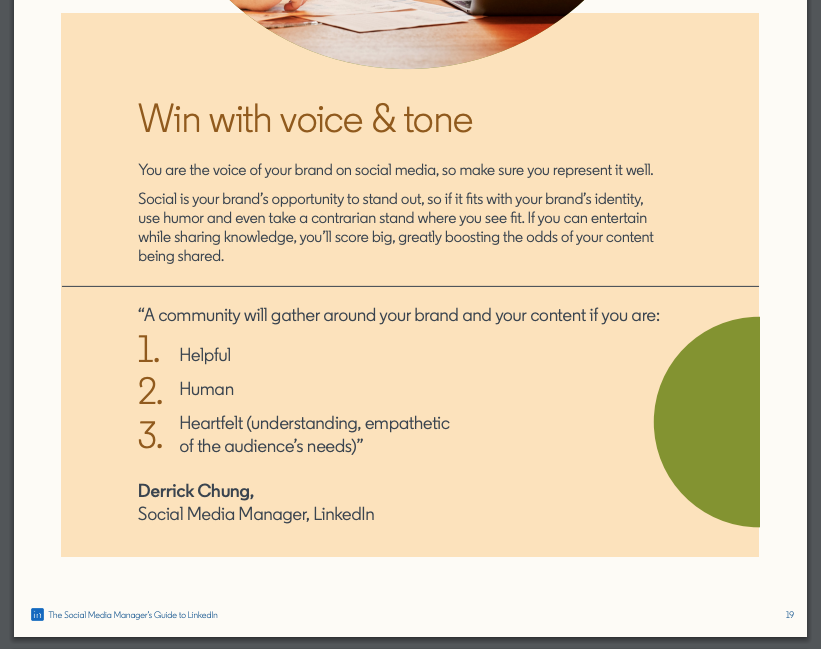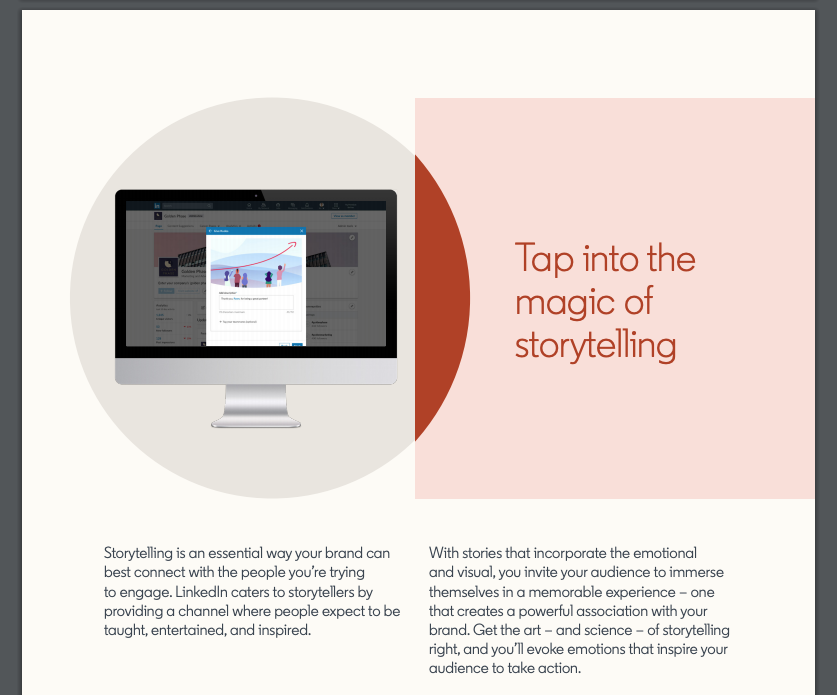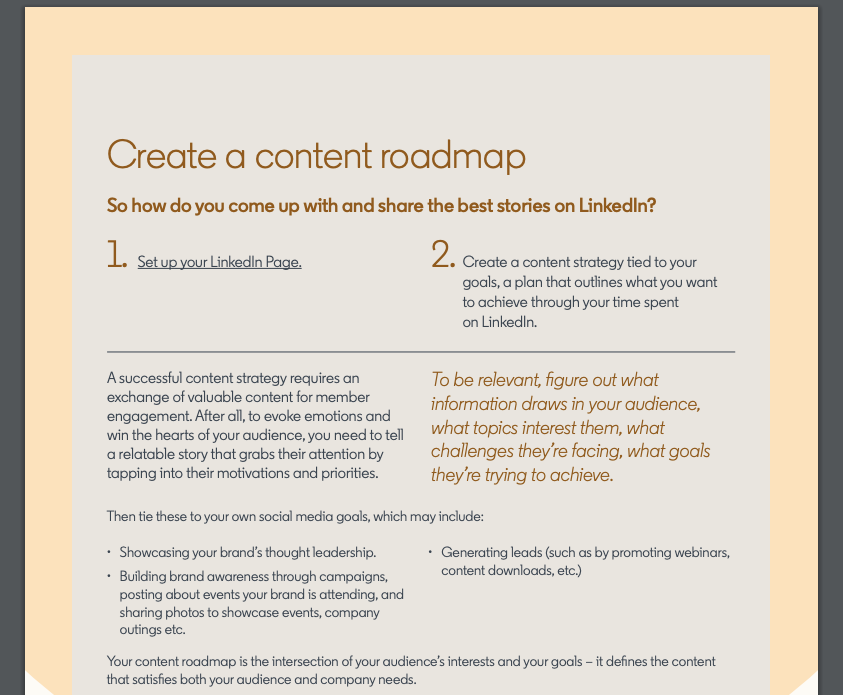Subscribe now and get the latest podcast releases delivered straight to your inbox.
Five years ago, I considered LinkedIn my go-to for... well, I'm not exactly sure.
I mean, occasionally, I would sign onto what I considered to be the "stuffy, responsible older brother" of the social network space to update my job title or something. Or to check-in (see: "stalk") old friends and classmates to see how they were faring out in the real world.
Since then, however, LinkedIn has achieved a "glow up," as the kids like to say. Now, it's considered something of a darling (and a digital strategy staple) of marketers everywhere — especially in the B2B space.
Why? Well, there are a few reasons:
- It's a powerful lead generation tool.
- It's a great way to showcase your business online.
- LinkedIn ads are actually worth the money. (Thanks, Microsoft!)
- LinkedIn even plays nice with marketers by sharing its algorithm.
As LinkedIn continues to rise in popularity, increase its functionality, and better showcase its value to digital marketers, it should come as no surprise that they're churning out more guides and playbooks on how marketers just like you can maximize your use of the business social network.
Most recently, they published The Social Media Manager's Guide to LinkedIn. It's worth a skim, even though it's definitely 101-level stuff.
That being said, being that I'm the chief content nerd around these parts, I didn't totally love LinkedIn's glossed-over approach to content strategy. Which is why I decided to take a break from content strategy-building and video filming to air my grievances about this niche little report.
But first, here's what I liked about it
I liked how this report underscored the importance of LinkedIn and how, yes, it's actually relevant now. So, if you haven't been paying attention or you still don't buy the hype, here's what you need to know:
- 97% of B2B marketers use LinkedIn for their content marketing efforts
- 78% of B2B marketers rate LinkedIn the most effective social media platform at helping their organization achieve specific objectives
- More than 90% of B2B marketers leverage LinkedIn over all other platforms
Basically, if you're a B2B digital marketer, LinkedIn is ready to welcome you with open arms — and I agree you should welcome that embrace.
I also liked its emphasis on:
- Setting realistic goals and adhering to best practices
- Building a purposeful content strategy
- How much thought leadership matters
- The importance of voice and tone for brands
...and so on.
Where things started to go wrong for me
Where I started getting a little tripped up was once I started digging beyond the super-basic suggestions of "deliver value" and "mix up your content" — both real, mind-blowing suggestions on page 31.
Basically, I would read something, agree with the higher-level principle, and then almost immediately disagree with the recommendations or find the suggested "solution" to be way too surface-level or grossly over-simplified. Specifically, in the area of content strategy... or anything content-related.
For example, here's a gem from page 29:

OK, this is great advice. Of course you should be human and helpful and heartfelt. (What are you going to be? Robotic and combative, and cold?)
But that's table stakes. Moreover, it makes no mention of how nuanced voice and tone standards for brands can (and should) be. Creating a content style guide (which governs voice and tone) is an involved, multi-stakeholder process.
🔎 Free on-demand: How to create a content style guide for your business
So, with this bit of background, I'm going to provide more context (and resources) based on the recommendations provided by LinkedIn. (Or point out where I disagree!)
Don't chase the myth of storytelling
Oh my gosh, if there's one word I hate more than "synergy," it's storytelling. And I say that as someone who writes for a living. So, when I scrolled to this page on the report...

...my head about exploded.
"With stories that incorporate the emotional and the visual, you invite your audience to immerse themselves in a memorable experience..."
What does that even mean? What does that even look like?
You see, the term "storytelling" is something often thrown without definition or examples that provide context. And, even though this introduction leads into a more tactical section on content strategy — although I'll get to that shortly, because I have issues with that part, too — LinkedIn falls into the same trap here.
Moreover, "storytelling" is something you go after as a brand only once you're already nailing the basics of a content strategy that your sales team loves because it makes your ideal buyers want to give you their money.
Not a moment before.
(Seriously, if I ever went to our sales team and said, "Hey, I'm going to focus on incorporating the emotional and the visual, so as to invite our audience to immerse themselves in a memorable experience," I would be chewed out. And rightfully so.)
Unfortunately, well-meaning social media managers and digital marketers who are just starting out often fall victim to this myth that "storytelling" is the goal when using social media as part of a larger digital marketing strategy.
It's not.
I understand, though. "Storytelling" sounds sexier when you're first starting out. But, believe me, generating revenue for your company, while less "sexy" sounding, will make your boss much happier.
Now, let's talk about the section that follows this — creating a content strategy.
Sigh, I wish content strategies were this simple
So, after LinkedIn went a little crazy describing the Nirvana-like ascension one can achieve through the divine art of *dry heave* storytelling, I was greeted with a set of content strategy recommendations that were a little more grounded in reality.
(Side note: Maybe if they had more clearly connect the dots between their utopian storytelling fever dream to what followed, I would be less cranky, but here we are.)

"Content roadmap."
"Content strategy."
"Generating leads."
Yes, yes, I know these words! I like these words! These are tangible, strategic deliverables and goals, based on stuff that business leaders like... and, you know, keep them from looking at us marketers and their budgets like wasteful expenses that don't drive growth for the company.
Of course, there are two problems.
1. The true goal of your content strategy
First, they actually over-complicated a very simple concept when they said this:
"To be relevant, figure out what information draws in your audience, what topics interest them, what challenges they’re facing, what goals they’re trying to achieve."
This is mixed-up marketing speak for:
Be the #1 resource about your industry to your ideal buyers. Do that by answering the questions they most want answers to.
That's it. Much simpler, right?
You don't need to seek "relevancy" or pull out a crystal ball to determine what draws your audience in. You already know. Well, more specifically, your sales team already knows — you just need to ask.
🔎 Related:
- How to create a content strategy in the digital age (free IMPACT+ course)
- How to create content that drives revenue for your company
- Best free content calendar template for digital marketers (updated for 2020)
If you want more guidance than that, we've found there five big topics (which we conveniently call The Big 5) that drive more traffic, leads, and sales than any other content categories, regardless of your industry:
- Pricing and cost
- Comparisons
- Problems and challenges
- Reviews
- Best, best of
Whether you're amplifying your content strategy via LinkedIn or creating original, native LinkedIn content for your company, once again, you need to start with these basics before you start experimenting with storytelling.
🔎 Related: 24 world-class blog post examples to inspire you
Your audience will only care about your stories once you demonstrate that, on a regular basis, your primary objective is to help them solve their problems or answer their questions in a way they can't get anywhere else.
2. It's not that simple...
Second, let's take a step back and look at this adorable "two-step" approach to creating a content strategy:

I want to live in a world where creating a content strategy is this simple. Sob.
For example, my process for creating IMPACT's content strategy includes, but is not limited to, the following:
- Content brainstorms with sales, as part of our revenue team initiative.
- Meetings with our director of demand generation, to make sure everything is fully aligned around current business needs, upcoming events, and so on.
- Ye olde keyword research, so our content is optimized properly.
- "Having a think" (as Chris Marr likes to say) to make sure our content strategy has an equitable blend across all topic areas in a given month.
Granted, our content strategy operation is a little more complex than most. Still, if you're just getting started with the idea of conquering the digital space to drive traffic, leads, and sales for your company, LinkedIn's "it's only two steps, I swear!" approach is incorrect.
"But Liz, aren't they just talking about a LinkedIn-specific content strategy?"
Yes, but even still, my point stands.
The content strategy you use on LinkedIn — or any social media platform, for that matter — should be rooted in the very same principles that guide your primary, on-your-website content strategy.
Furthermore, that strategy should come first.
Now, look, I get it. LinkedIn's #1 goal with this guide is to get people to use LinkedIn. Just as with every other guide from a social network on the planet, they're not going to waste time laying out how to use a platform as part of a larger, more integrated strategy.
To be clear, I'm not cranky with LinkedIn. The folks who put together this report did a great job and covered a lot of ground. It's also their job to make LinkedIn seem as if it's the center of the universe and the silver bullet solution to all of your B2B or B2C marketing problems.
Still, the points I've made here still stand:
- Don't even breathe the word "storytelling" out loud unless you've nailed the basics of your content strategy.
- Do obsess over being the #1 teacher about what you do in your space. (It pays off, no matter your industry, size, or location.)
- Don't oversimplify the content strategy process, or create a self-serving, independent content strategy for LinkedIn.
- Do create a content strategy that targets your ideal buyers' most pressing questions and then answer those questions as thoroughly and honestly as possible.
This even holds true for any paid ads strategy you launch on LinkedIn.
When you lead with the principles of being that best teacher in your industry who answers any question thrown your way honestly and thoroughly, you'll never have to manufacture a human, helpful voice or tone... on LinkedIn or anywhere else.
And you'll never have to chase after your audience with "storytelling." Your buyers will chase after you.


Order Your Copy of Marcus Sheridan's New Book — Endless Customers!

